The Importance of Fast Website Design in the Digital Age

In today’s world where speed is paramount, having a slow-loading website can mean losing countless audiences and opportunities.
#Website_speed is no longer just a competitive advantage, but an undeniable necessity.
Users expect websites to open in a fraction of a second, and if this doesn’t happen, they will quickly move to your competitors.
This is where the importance of fast website design reveals itself.
Research has shown that even a one-second delay in page load time can lead to a 7% reduction in conversion rates, which is a significant loss for businesses.
Google has also long considered site speed as one of the important factors in its search rankings.
In addition to user experience, site speed directly impacts #SEO and visibility in search engines.
Slower websites rank lower in search results, which means less traffic and, consequently, less revenue.
The importance of this issue is such that large companies make huge investments in optimizing their websites’ speed.
The concept of Search Engine Optimization (SEO) is inextricably linked to the technical performance of a website, including speed.
A fast website design not only keeps users satisfied but also helps you stand out in the competitive online space and achieve your business goals.
This is especially vital for e-commerce websites, where every second can be the difference between a sale and a lost customer.
To achieve a high-speed website, various approaches exist, including code optimization, image compression, caching, and choosing suitable hosting.
These efforts not only help increase customer satisfaction but also reduce operational costs, as optimized websites consume fewer resources.
Therefore, fast website design is a long-term investment for any business that wants to succeed in the digital world.
Understanding the importance of this is the first step towards a more optimized and efficient website.
Are you tired of your e-commerce website not generating as much revenue as it could? Rasaweb, specializing in professional e-commerce website design, solves this problem forever!
✅ Increase sales rate and revenue
✅ High load speed and exceptional user experience
⚡ Get free consultation for e-commerce website design
Key Factors Affecting Website Speed
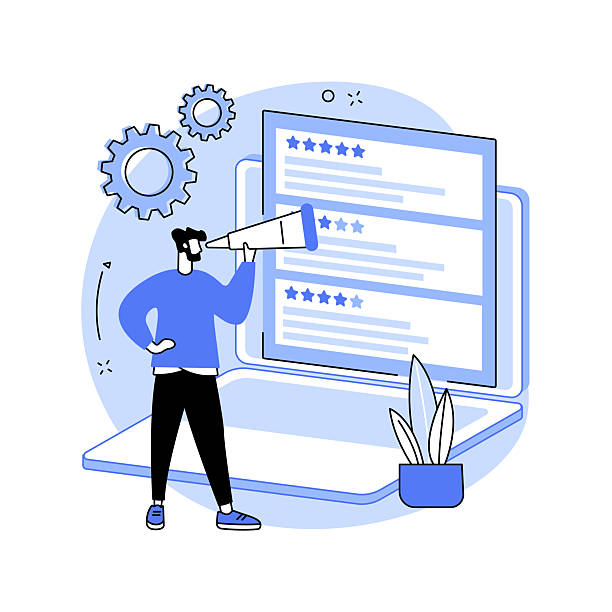
Understanding #factors_affecting_site_speed is crucial for anyone looking for fast website design.
The first and perhaps most important factor is web hosting (hosting).
Choosing inappropriate and cheap hosting can negate all your optimization efforts.
Shared hosting, despite its low price, usually offers limited resources, and your site will slow down during high traffic.
Using dedicated servers, VPS or cloud hosting are better options for speed and stability.
The second factor is the size and number of website files.
High-volume images, heavy CSS and JavaScript files, and numerous fonts can significantly increase loading time.
Optimizing images (compression and using modern formats), compressing and minifying CSS and JavaScript codes, and reducing the number of HTTP requests to the server are essential actions in this regard.
Using Content Delivery Networks (CDN) can also dramatically improve loading speed by storing a cached version of your site’s content on servers closer to users.
Coding structure and plugin usage also play an important role.
Inefficient code, too many and inefficient plugins, and heavy frameworks can slow down the site.
Fast website design requires a comprehensive approach that includes careful consideration of all these factors.
For example, using Content Management Systems (CMS) like WordPress requires careful selection of themes and plugins, as many of them can actually slow down the site instead of improving it.
Reviewing and removing unnecessary plugins or replacing them with lighter solutions can significantly increase speed.
Database optimization is another aspect that is often overlooked but can have a great impact on overall site performance.
Also, avoiding excessive tracking or advertising scripts can help with site stability and speed.
Optimizing Images and Media for High Speed
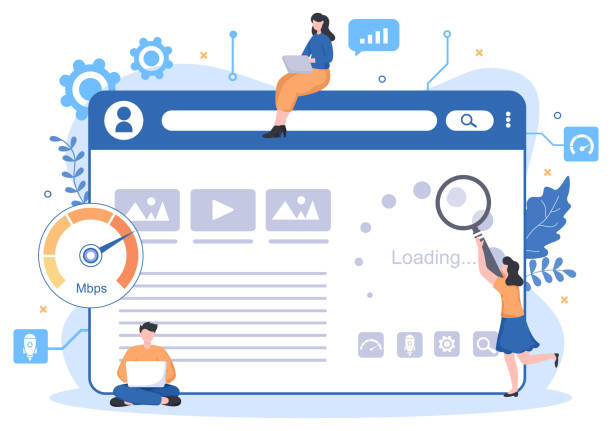
One of the biggest factors in website slowness is the large volume of #images and #media.
In the process of fast website design, optimizing these elements is of high importance.
High-quality images, if not properly compressed and optimized, can be hundreds of kilobytes or even megabytes in size, which severely increases loading time.
The first step in this area is choosing the appropriate image format.
For photos, JPEG is the best option, while for graphics and icons, PNG or SVG are recommended.
Next-generation formats like WebP also have smaller sizes and offer acceptable quality, making them an excellent choice for modern browsers.
Image compression without noticeable quality loss (Lossless Compression) or with minimal quality loss (Lossy Compression) is another solution.
Many online tools and desktop software are available for this purpose.
Also, image sizes should be proportional to their display location on the website; loading an image with dimensions of 4000×3000 pixels to display in a 200×150 pixel frame is a waste of bandwidth and time.
Using Lazy Loading (lazy loading) means that images are only loaded when the user scrolls near them, not during the initial page load.
This technique is particularly effective for long pages with many images.
For video optimization, using compressed formats like MP4, limiting video dimensions, and hosting them on specialized platforms like YouTube or Vimeo instead of directly on your own server is recommended.
These actions not only improve site speed but also reduce server resource consumption.
A fast website design should include a comprehensive strategy for media management.
In the table below, you can see some of the most important image optimization techniques:
| Technique | Description | Impact on Speed |
|---|---|---|
| Image Compression | Reducing image file size without noticeable quality loss | Reduces image loading time |
| Choosing Appropriate Format | Using WebP, JPEG for photos and PNG/SVG for graphics | Higher efficiency in file sizes |
| Lazy Loading | Loading images only when needed by the user | Increases initial page load speed |
| Responsive Images | Displaying appropriate image size for different devices | Optimizes bandwidth consumption and speed |
The Role of Hosting and CDN in Fast Website Design
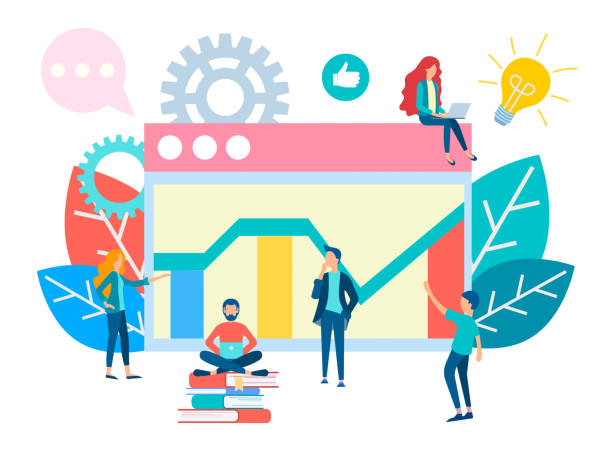
In the discussion of #fast_website_design, web hosting infrastructure and Content Delivery Systems (CDN) play a very fundamental role.
Quality hosting not only ensures stability and security but also directly impacts your site’s loading speed.
Choosing powerful servers, with sufficient RAM and CPU, along with ample bandwidth, are important points to consider.
Web hosting servers come in various types, including shared hosting, VPS, dedicated servers, and cloud hosting.
Each of these has its advantages and disadvantages, and the appropriate choice should be made based on your needs and budget.
Cloud hosting and dedicated servers usually offer the best performance in terms of speed, as they provide you with more dedicated resources and have high flexibility.
In addition to the type of hosting, the physical location of the server is also important.
The closer the server is to your target audience, the lower the latency and the faster the loading speed.
For example, if your audience is in Iran, choosing a domestic host or an international host with a server in nearby countries can be beneficial.
However, for #website_speed_increase on a global scale, a Content Delivery Network (CDN) is a powerful solution.
A CDN is a network of servers scattered in different geographical locations that store cached versions of your site’s static content (such as images, CSS, JavaScript).
When a user from a specific region visits your site, the content is delivered to them from the closest CDN server, not the main site server.
This significantly reduces loading time, especially for users accessing the site from long distances.
Implementing a CDN is one of the essential steps in the process of fast website design and performance optimization.
Companies like Cloudflare, Akamai, and MaxCDN are among the prominent CDN service providers that can significantly enhance user experience.
Don’t have a corporate website yet and missing out on online opportunities? With professional corporate website design by Rasaweb,
✅ Double your business credibility
✅ Attract new customers
⚡ Get a free consultation for your corporate website!
Clean Coding and Front-end & Back-end Code Optimization
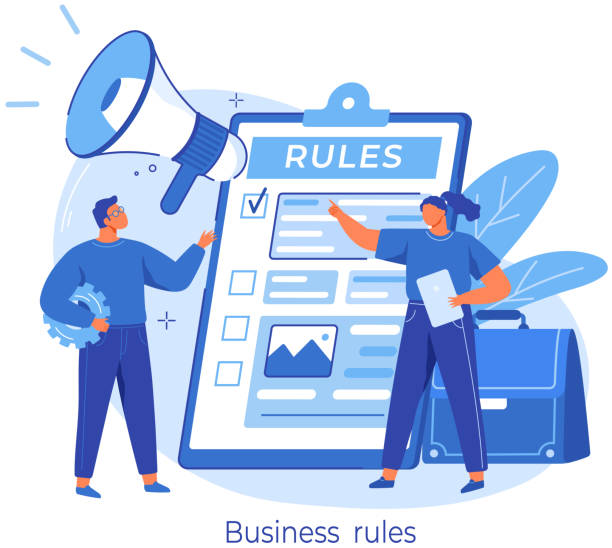
The quality of #coding is one of the most important pillars of a fast website design.
Disorganized, repetitive, and unoptimized code can severely reduce website loading speed and responsiveness.
In the front-end, optimizing HTML, CSS, and JavaScript codes is of high importance.
For example, minification of these files, by removing extra characters like spaces and blank lines, can reduce their size and improve loading time.
Merging CSS and JavaScript files into one or more files can also decrease the number of HTTP requests to the server, which greatly helps increase speed.
Using JavaScript with Async or Defer attributes for non-essential files that don’t need to load simultaneously with HTML is another effective technique.
This prevents render-blocking and allows the browser to display the main content earlier.
Also, optimizing CSS selectors and avoiding excessive use of Inline or Internal CSS helps improve performance.
For large projects, using light and efficient frameworks that have internal optimizations is recommended.
On the back-end, optimizing database queries, proper use of indexes, and data caching play a vital role in fast website design.
An inefficient database query can significantly increase server response time.
Optimizing queries, using NoSQL for unstructured data, and implementing caching systems (such as Redis or Memcached) to store frequently used query results can reduce the load on the database and increase processing speed.
Choosing the right programming language and framework for the back-end is also important; for example, languages like PHP with frameworks like Laravel or Node.js with Express can offer good performance, but more important than the language is optimal implementation and proper architecture.
Regular updates of PHP and MySQL versions can also bring significant performance improvements.
Website Speed Analysis and Improvement Tools
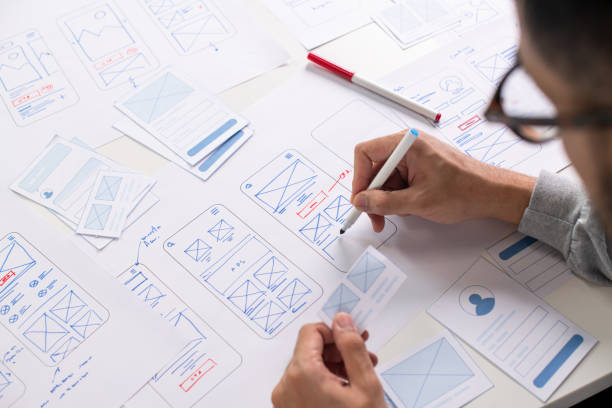
For anyone involved in #fast_website_design, using #website_speed_analysis_tools is an essential step.
These tools help you identify performance bottlenecks and find suitable solutions to address them.
One of the most well-known and widely used tools is Google PageSpeed Insights.
This tool analyzes your site’s performance on mobile and desktop, assigns a score from 1 to 100, and provides recommendations for improvement.
These recommendations include things like image compression, code minification, and removing render-blocking resources.
Another tool that provides more comprehensive information is GTmetrix.
GTmetrix uses two metrics, PageSpeed and YSlow, to evaluate site performance and provides a report including full load time, page size, and number of requests.
This tool allows you to view the Waterfall Chart, which shows the loading details of each element on the page and helps identify slow elements.
Also, Google Lighthouse, which is also built into Chrome’s developer tools, assesses other aspects besides speed, such as accessibility, SEO best practices, and Progressive Web App (PWA) performance.
Lighthouse provides a comprehensive overview of your website’s overall health and offers precise recommendations for improvement.
These tools not only reveal existing problems but also help you measure the improvements resulting from applying changes in the fast website design process.
For example, after optimizing images or using a CDN, you can re-test your site with these tools to see the numerical impact of the changes.
Regular use of these tools is an integral part of a website’s maintenance and performance improvement strategy.
In addition to the above tools, some more specialized tools like Pingdom Tools and WebPageTest also exist that offer advanced capabilities such as testing from different geographical locations and simulating different internet speeds.
These tools allow you to gain a deep and analytical understanding of your site’s performance and choose optimization strategies with greater precision.
The Impact of Site Speed on SEO and Google Ranking
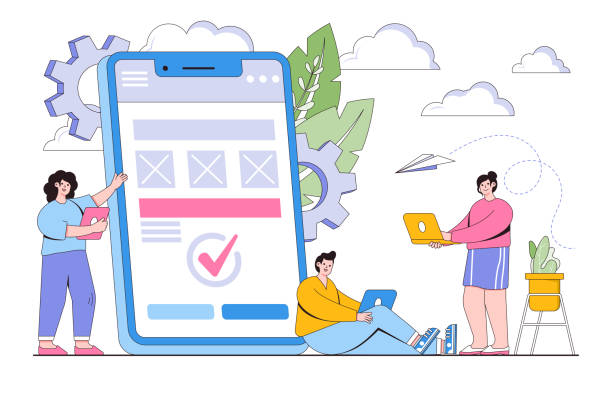
In today’s competitive world, #SEO and #Google_ranking are vital for any website to be seen.
One of the key factors Google considers for ranking websites is their loading speed.
Google officially announced in 2010 that desktop site speed is a ranking factor, and since 2018, this factor has also been applied to #mobile.
This emphasis shows that Google prioritizes user experience and favors faster websites.
With the introduction of Core Web Vitals in 2020, Google provided more specific metrics for measuring page experience that are directly related to speed and visual stability.
Core Web Vitals include three main metrics: LCP (Largest Contentful Paint) which measures the loading time of the largest visual element on the page; FID (First Input Delay) which indicates the site’s responsiveness to the user’s first interaction (such as clicking a button); and CLS (Cumulative Layout Shift) which assesses the visual stability of the page, meaning it prevents sudden and unexpected changes in page layout.
Good scores in these metrics not only improve user experience but also send a positive signal to Google that your site is of high quality.
A fast website design directly impacts the improvement of these metrics and consequently leads to better rankings in search results.
Faster sites have lower bounce rates, as users are less likely to get frustrated and leave the page.
Also, their conversion rates are higher, as users have a better experience, and the likelihood of performing the desired action (purchase, registration, etc.) increases.
Therefore, investing in fast website design not only means user satisfaction but is also a smart strategy for SEO and business growth.
This two-way relationship between speed and SEO highlights the importance of a comprehensive approach to website optimization more than ever.
| Core Web Vital Metric | Definition | Good Score Goal |
|---|---|---|
| LCP (Largest Contentful Paint) | Time it takes for the largest visual element in the viewport to load | Less than 2.5 seconds |
| FID (First Input Delay) | Time from the first user interaction to the browser’s response | Less than 100 milliseconds |
| CLS (Cumulative Layout Shift) | Measures the visual stability of the page (amount of element shifting) | Less than 0.1 |
Challenges and Solutions for Fast Website Design for Businesses
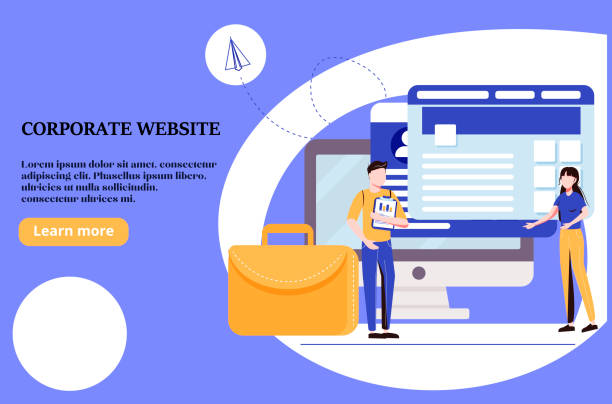
Implementing a #fast_website_design for businesses, despite all its advantages, comes with #challenges.
One of the biggest challenges is balancing speed and functionality.
Many businesses tend to have numerous features and complex visual designs on their websites, which often leads to increased file sizes and slower loading.
Another challenge is the need for continuous updates and maintenance.
Site speed is not a fixed issue and may decrease with the addition of new content, plugins, or infrastructure changes.
This requires continuous monitoring and optimization.
To overcome these challenges, businesses must adopt a strategic approach.
The first step is #prioritization.
Decisions must be made about which functionalities are truly critical for users and which can be removed or optimized.
Using the principles of minimalist design and conditional loading for non-essential elements can be helpful.
Also, investing in automated optimization and performance monitoring tools can help businesses maintain site speed.
Financial challenges also exist; fast website design may initially require more investment for hosting, CDN, and specialized developers.
But this cost should be considered an investment for return on investment (ROI).
Faster websites mean higher conversion rates, greater customer satisfaction, and better search engine rankings, which ultimately lead to increased revenue and profitability.
Educating internal teams on best practices for optimization and site speed can also help with long-term performance management.
Finally, collaborating with specialists in website design and performance optimization can help businesses overcome these challenges and achieve their goals of having a high-speed website.
This approach is particularly important for growing businesses that need scalability.
Does your company website perform as well as your brand deserves? In today’s competitive world, your website is your most important online tool. Rasaweb, specializing in professional corporate website design, helps you to:
✅ Gain credibility and customer trust
✅ Convert website visitors into customers
⚡ Get a free consultation for your corporate website!
The Future of Web Design and the Role of Speed in It

With technological advancements and changing user expectations, the #future_of_web_design will increasingly focus on speed, stability, and accessibility.
Fast website design is no longer just an option but an emerging industry standard.
With the widespread use of mobile devices and internet networks with varying speeds (from 5G to areas with slower internet), the need for websites that load quickly under any conditions is felt more than ever.
One of the key trends in the future is the increased adoption of Progressive Web Apps (PWAs).
PWAs offer a combination of the best features of web and mobile applications, including offline functionality, fast loading, and a native app-like user experience.
Speed is at the core of PWAs, and this technology can elevate the user experience to a new level.
Also, greater attention to optimizing for Core Web Vitals and other page experience metrics, from search engines like Google, means that developers and web designers must constantly focus on their sites’ performance.
New technologies such as HTTP/3 and WebAssembly are also shaping the future of the web.
HTTP/3, by reducing latency and improving efficiency, can help speed up page loading, while WebAssembly enables the execution of high-performance code in the browser.
These advancements allow developers to build more complex and interactive websites without sacrificing speed.
Furthermore, artificial intelligence and machine learning may also play a role in automated site speed optimization in the future.
In summary, #web_speed is a vital and growing element in web design that will always be evolving, and fast website design will remain a constant need in this dynamic ecosystem.
Focusing on these aspects helps businesses lead the way in the online space.
How to Choose a Fast Website Design Team?
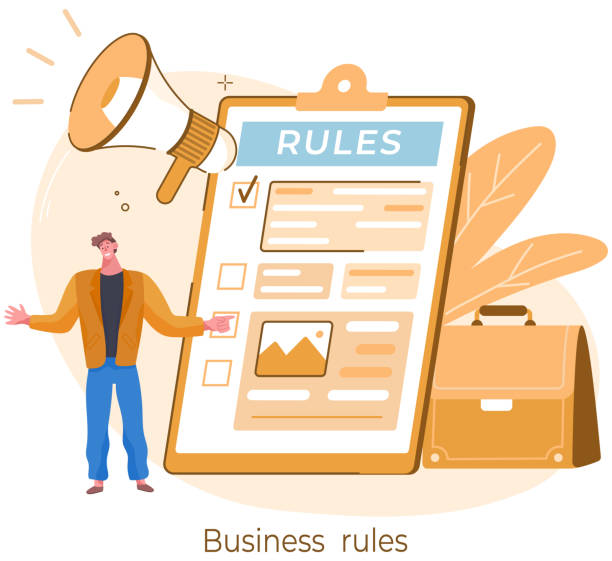
Choosing a team or company for #fast_website_design can be one of the most important decisions for any business.
Finding a team that not only has design and development skills but also specifically focuses on performance optimization and site speed is crucial.
The first step is to review their portfolio and previous work.
Are the websites they have previously designed genuinely fast? You can use speed analysis tools like PageSpeed Insights or GTmetrix to evaluate their portfolio and ensure they have achieved good scores.
Proficiency in using optimization techniques is also very important.
Is the team familiar with concepts such as image compression, code minification, CDN usage, caching, and database optimization? Do they have experience working with Google’s Core Web Vitals and can they guarantee that your site will perform well in these metrics? A team specialized in fast website design should be able to provide specific and practical solutions to increase your site’s speed.
Also, their ability to choose suitable hosting and correctly configure the server is of high importance.
In addition to technical skills, communication and transparency are also key.
Choose a team that can clearly explain processes, challenges, and solutions.
They should be willing to provide regular reports on work progress and speed optimization results.
Asking questions about their approach to performance testing and the tools they use can give you good insight.
Finally, look for a team that not only builds a fast website for you but is also committed to its long-term support and maintenance to ensure your site’s speed is maintained over time.
This commitment assures you that your investment in fast website design will yield desirable and sustainable results.
Frequently Asked Questions
| Question | Answer |
|---|---|
| What is fast website design? | It refers to the process of building a website whose pages load quickly and in minimal time for users. |
| Why is site speed important? | Site speed is crucial for a better user experience, reducing bounce rates, increasing page views, and improving search engine rankings (SEO). |
| What factors affect site loading speed? | Image and file size, unoptimized coding, server speed and location, lack of caching and CDN, and a large number of HTTP requests. |
| What is the role of images in site speed? | High-volume images can significantly reduce site speed. They should be compressed, optimized, and used in the appropriate format. |
| Is host server speed important? | Yes, server response speed has a direct impact on the initial loading time of the site. Choosing suitable hosting is very important. |
| How does website coding affect speed? | Clean, optimized, minified, and error-free coding reduces file size and increases processing speed. |
| How does Caching (caching) help? | Caching allows the user’s browser to store some site information, so in subsequent visits, there is no need to reload everything, and the site loads faster. |
| Do extra plugins and scripts slow down the site? | Yes, excessive or incorrect use of plugins, widgets, and extra scripts can cause the site to slow down. |
| How can site speed be tested? | By using reputable online tools such as Google PageSpeed Insights, GTmetrix, or Pingdom Tools. |
| What are the key tips for fast website design? | Optimizing images, using CDN, enabling caching, reducing HTTP requests, optimizing CSS and JavaScript, and choosing quality hosting. |
And other services from Rasa Web Advertising Agency in the field of advertising
Smart Direct Marketing: Revolutionize click-through rates with attractive UI design.
Smart Conversion Rate Optimization: A professional solution for user engagement focusing on custom programming.
Smart Direct Marketing: An effective tool for customer acquisition through Google Ads management.
Smart Data Analysis: An innovative platform for improving user interaction with custom programming.
Smart Marketing Automation: A fast and efficient solution for increasing sales with a focus on attractive UI design.
And over a hundred other services in online advertising, advertising consulting, and organizational solutions
Internet Advertising | Advertising Strategy | Advertorials
Sources
Increase site speed with optimization WordPress speed increase solutions Website speed optimization and SEO How to increase website speed?
?At Rasaweb Afarin Digital Marketing Agency, we help your business shine brightly in the online world. From secure website design and professional services to comprehensive SEO strategies and targeted content creation, we are your reliable partner on the path to digital growth.
📍 Tehran, Mirdamad Street, next to Bank Markazi, Kazeroun Jonoubi Alley, Ramin Alley No. 6


